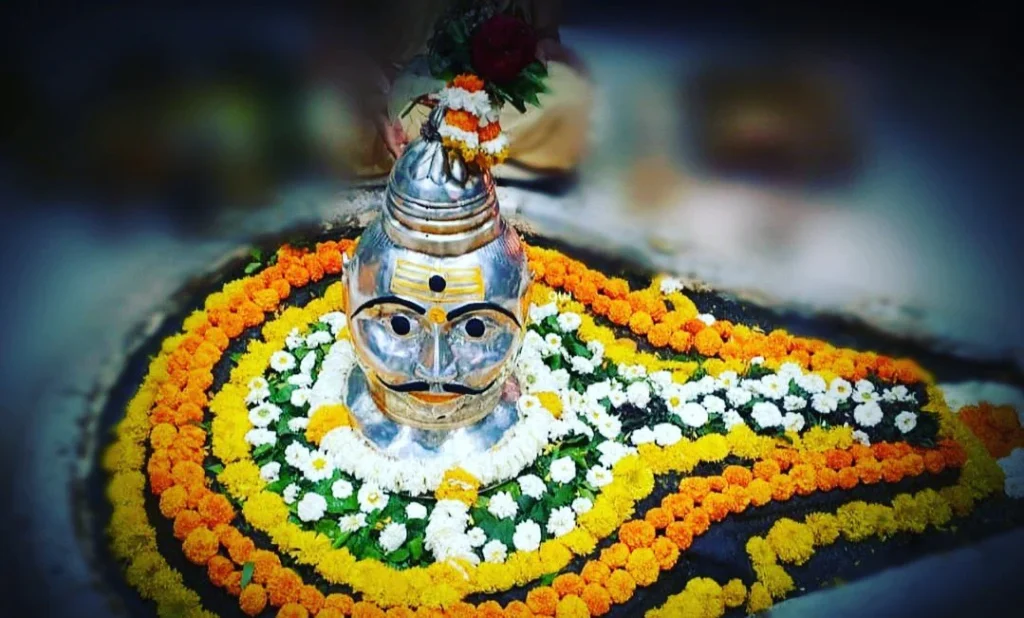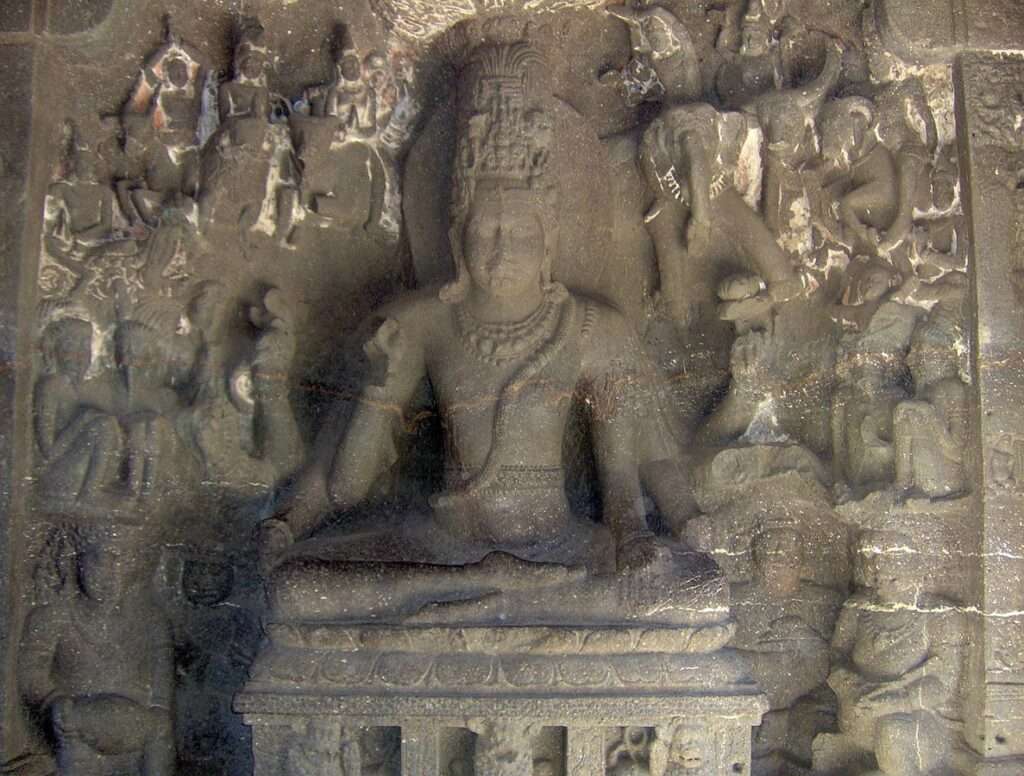Table of Contents
Introduction
History of Bhimashankar Temple
The origin of Bhimashankar Temple is shrouded in mystery and mythology. According to one legend, Lord Shiva appeared here as a fiery pillar of light to destroy the demon Tripurasura, who had conquered the three worlds. The intense heat of the battle caused the river Bhima to evaporate, hence the name Bhimashankar. Another legend says that the temple was built by Bhima, the son of Kumbhakarna (the brother of Ravana), who was a devotee of Lord Shiva.
The earliest historical reference to Bhimashankar Temple is found in a stone inscription dated 1200 CE, which mentions a grant by a king named Rattaraja. The temple was renovated and expanded by various rulers and dynasties over the centuries, such as the Yadavas, the Bahamanis, the Marathas, and the Peshwas. The most notable contribution was made by Nana Phadnavis, a minister of the Peshwa, who built the sabhamandap (assembly hall) and the shikhara (spire) in the 18th century. He also donated a large bell that he had captured from the Portuguese fort of Vasai.
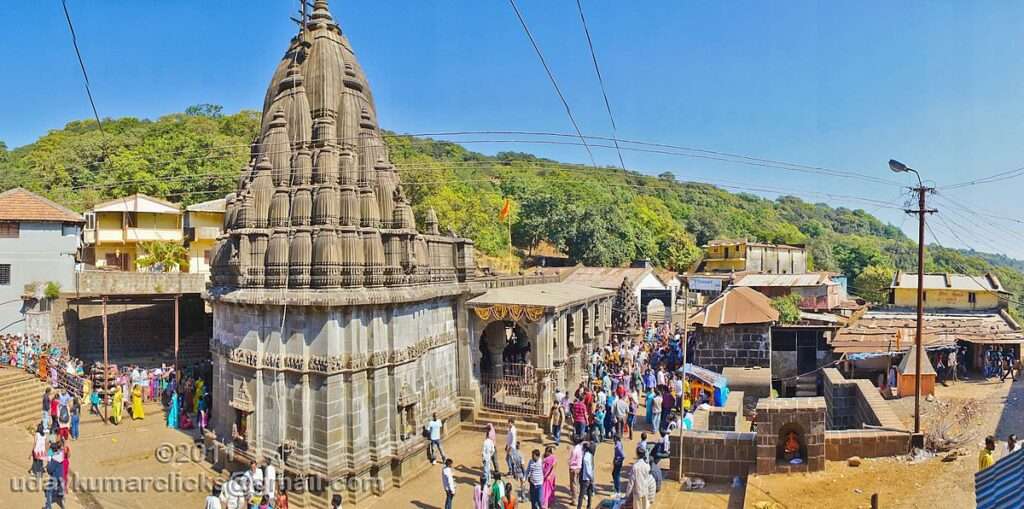
Pujas
Abhishek
Rudrabishek
Mahapuja
Maha Naivedya
Laghurudra
Laghurudra : Maha Naivedya
Laghurudra : Maha Naivedya : Bhrahman Bhojan
Architecture of Bhimashankar Temple
Bhimashankar Temple is a fine example of the Nagara style of architecture, which is prevalent in northern India. The temple complex consists of a garbhagriha (sanctum sanctorum), an antarala (vestibule), a sabhamandap, and a pradakshina path (circumambulatory path). The garbhagriha houses the swayambhu (self-manifested) Shiva linga, which is considered to be one of the three Jyotirlingas of Maharashtra. The antarala has a Nandi (bull) idol facing the Shiva linga. The sabhamandap has eight pillars decorated with carvings of deities and human figures. The shikhara is adorned with sculptures of Shiva and his various forms.
The temple also has several subsidiary shrines dedicated to other gods and goddesses, such as Parvati, Ganesh, Hanuman, Vishnu, and Rama. The temple premises also have a sacred pond called Kamalaja Kund, where devotees take a dip before entering the temple. The temple is surrounded by lush green forests and hills that offer a scenic view of nature.
Legends of Bhimashankar Temple
Bhimashankar Temple is associated with many legends and stories that add to its spiritual significance. Some of the most popular ones are:
The curse of Kamalaja: Kamalaja was a goddess who helped Lord Shiva in his fight against Tripurasura. She was so pleased with his victory that she asked him to marry her. However, Shiva refused as he was already married to Parvati. Kamalaja felt insulted and cursed him that he would become an ascetic and wander in the forests. Shiva accepted her curse and came to Bhimashankar, where he meditated under a mango tree. Parvati followed him and persuaded him to return to Kailash. Kamalaja realized her mistake and apologized to Shiva and Parvati. She then requested them to stay at Bhimashankar as their abode.
The devotion of Kusuma: Kusuma was a pious woman who worshipped Lord Shiva with flowers every day. She had a son named Sudhanva, who was also devoted to Shiva. One day, a king named Abhayankara saw Kusuma and fell in love with her. He tried to abduct her but Sudhanva resisted him. The king killed Sudhanva and took Kusuma to his palace. Kusuma prayed to Lord Shiva for help. Shiva appeared before her and killed the king with his trident. He then revived Sudhanva and blessed them both. He also granted them a boon that they would be reborn as Nandi and Kamalaja, and serve him at Bhimashankar.
The penance of Morya Gosavi: Morya Gosavi was a saint who was an ardent devotee of Lord Ganesh. He performed severe penance at Bhimashankar for 12 years to please Ganesh. Ganesh was pleased with his devotion and appeared before him. He asked him to choose a boon. Morya Gosavi asked for the darshan (vision) of Lord Shiva. Ganesh granted his wish and took him to the garbhagriha of Bhimashankar Temple, where he showed him the Shiva linga. Morya Gosavi was overjoyed and thanked Ganesh and Shiva. He then attained samadhi (liberation) at Bhimashankar.
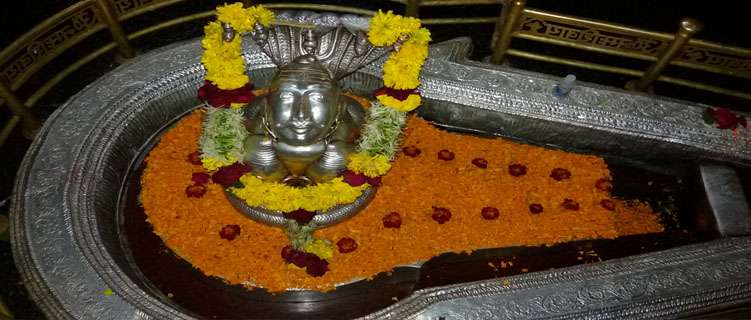
Festivals of Bhimashankar Temple
Bhimashankar Temple celebrates various festivals throughout the year that attract thousands of devotees and tourists. Some of the major festivals are:
Mahashivaratri: This is the most important festival of Bhimashankar Temple, as it marks the day when Lord Shiva manifested as a Jyotirlinga. The festival falls in the month of February or March, according to the Hindu calendar. On this day, devotees observe a fast and offer prayers, flowers, fruits, milk, and water to the Shiva linga. They also chant the Panchakshara mantra “Om Namah Shivaya” and perform the Rudrabhishek (ritual bathing) of the Shiva linga. The temple remains open throughout the night and a grand aarti (ceremony of lights) is performed at midnight.
Shravan Maas: This is the holy month of Lord Shiva, which falls in July or August, according to the Hindu calendar. During this month, devotees visit Bhimashankar Temple every Monday and offer bilva leaves, honey, and milk to the Shiva linga. They also perform the Abhishek with water from the Kamalaja Kund. The temple is decorated with flowers and lights and special pujas (worship services) are conducted.
Tripuri Poornima: This is the day when Lord Shiva killed Tripurasura and became known as Tripurari (the destroyer of Tripura). The festival falls on the full moon day of the month of Kartik, which is in November or December, according to the Hindu calendar. On this day, devotees light lamps and candles in their homes and temples and offer prayers to Lord Shiva. They also celebrate the victory of good over evil and the power of light over darkness.
Attractions of Bhimashankar Temple
Bhimashankar Temple is not only a religious destination but also a natural paradise that offers many attractions for visitors. Some of them are:
Bhimashankar Wildlife Sanctuary: This is a protected area that covers an area of 131 square kilometers around Bhimashankar Temple. It was established in 1984 to conserve the biodiversity of the Western Ghats. It is home to many rare and endangered species of flora and fauna, such as the Malabar giant squirrel, leopard, barking deer, wild boar, sambar, langur, hyena, porcupine, and pangolin. It also has a rich variety of birds, butterflies, reptiles, amphibians, and insects. The sanctuary offers many trekking trails and camping sites for nature lovers.
Gupt Bhimashankar: This is a hidden Shiva linga that is located behind the waterfall of Bhima River near Bhimashankar Temple. It is believed that this is the original site where Lord Shiva appeared as a Jyotirlinga. It is accessible only during the dry season when the water level is low. It is a serene and secluded place where one can meditate and enjoy the beauty of nature.
Hanuman Lake: This is a small lake that is situated near Bhimashankar Temple. It is named after Lord Hanuman, who is said to have visited this place during his search for Sita in Lanka. The lake has clear water and a peaceful atmosphere. It is a good spot for picnics and relaxation.
Nagphani Point: This is a hilltop that offers a panoramic view of the surrounding valleys and mountains. It is also known as Cobra’s Hood Point because of its shape that resembles a cobra’s hood. It is a popular destination for trekkers and photographers.
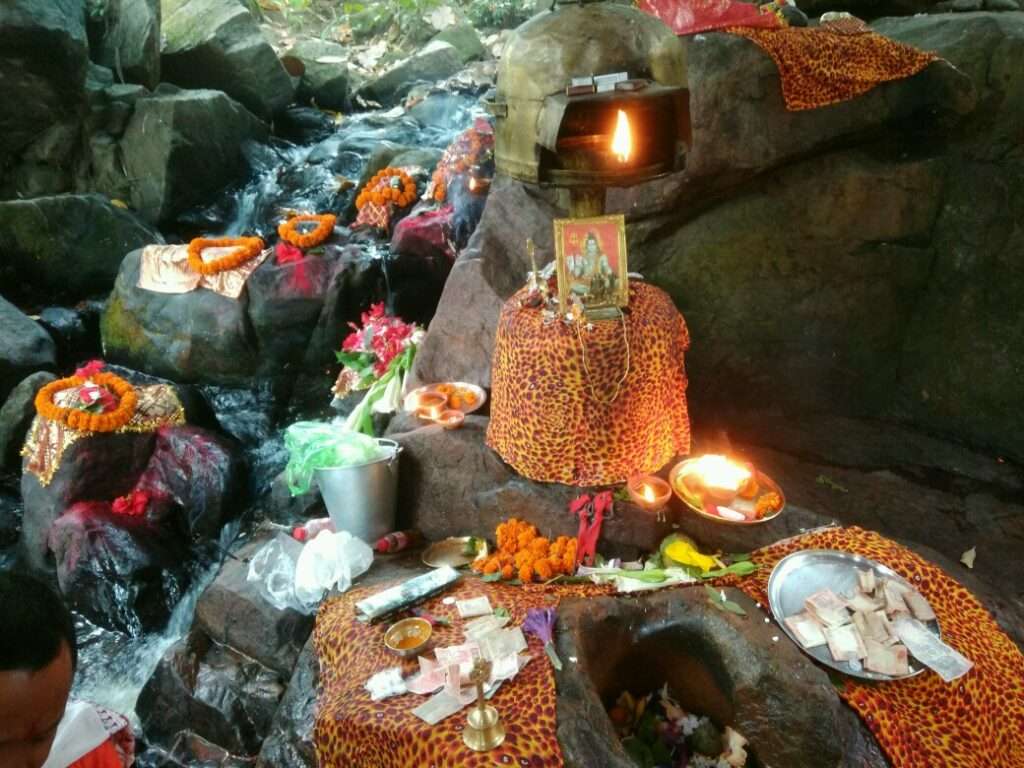
How to Reach Bhimashankar Temple
Here is a table of how to reach Bhimashankar Temple from major cities of India with travel distance:
| City | Distance (km) | Travel time (hrs) | Mode of transport |
|---|---|---|---|
| Mumbai | 168 | 2.5 | Train, bus, taxi |
| Pune | 110 | 1.5 | Train, bus, taxi |
| Nashik | 150 | 2 | Train, bus, taxi |
| Aurangabad | 220 | 3 | Train, bus, taxi |
| Satara | 140 | 2 | Train, bus, taxi |
| Kolhapur | 230 | 3.5 | Train, bus, taxi |
How to reach Bhimashankar Temple from Mumbai:
- The nearest railway station to Bhimashankar is Karjat. You can take a train from Mumbai to Karjat and then either take a bus or a taxi to Bhimashankar. The travel time from Mumbai to Karjat is around 2 hours and the distance is around 90 kilometers.
- You can also take a bus from Mumbai to Bhimashankar. There are several bus operators that run buses on this route. The travel time from Mumbai to Bhimashankar is around 3 hours and the distance is around 168 kilometers.
- You can also take a taxi from Mumbai to Bhimashankar. This is the most expensive option, but it is also the fastest. The travel time from Mumbai to Bhimashankar is around 2 hours and the distance is around 168 kilometers.
How to reach Bhimashankar Temple from Pune:
- The nearest railway station to Bhimashankar is Karjat. You can take a train from Pune to Karjat and then either take a bus or a taxi to Bhimashankar. The travel time from Pune to Karjat is around 1 hour and the distance is around 60 kilometers.
- You can also take a bus from Pune to Bhimashankar. There are several bus operators that run buses on this route. The travel time from Pune to Bhimashankar is around 1.5 hours and the distance is around 110 kilometers.
- You can also take a taxi from Pune to Bhimashankar. This is the most expensive option, but it is also the fastest. The travel time from Pune to Bhimashankar is around 1 hour and the distance is around 110 kilometers.
Frequently asked questions
Q: What is the significance of Bhimashankar temple?
A: Bhimashankar temple is believed to be the site where Shiva defeated the demon Tripurasura and saved the world from his tyranny. The temple is also the source of the river Bhima, which flows through Maharashtra and Karnataka. The temple is associated with several legends and stories from the Puranas and the Mahabharata.
Q: How old is the temple and what is its architectural style?
A: The temple is said to date back to the 13th century, but it has undergone several renovations and additions over time. The temple has a mix of old and new structures in the Nagara style of architecture, which is common in northern India. The main shrine has a Shiva linga in the center of the sanctum sanctorum, surrounded by intricate carvings of deities and human figures. The sabhamandap (hall) and the shikhara (spire) were built by Nana Phadnavis, a minister of the Peshwa dynasty, in the 18th century. The temple also has a large bell that was offered by Chimaji Appa, a general of the Maratha army, after he won a war against the Portuguese.
